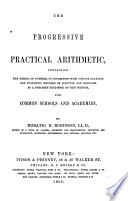 | Horatio Nelson Robinson - Arithmetic - 1859 - 348 pages
...one ; thus, by taking away 2 in the fifth term, 2-J-3 + 3 + 3 + 3, we have 3 taken 4 times. Hence, RULE. Divide the difference of the extremes by the number of terms less one. EXAMPLES. 1. The first term is 2, the last term is 17, and the number of terms is 6 ; what is the common... | |
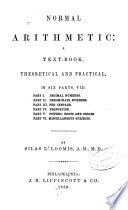 | Silas Lawrence Loomis - Arithmetic - 1859 - 324 pages
...PROB. CLIII. — GIVEN, THE EXTREMES AND NUMBER OF TERMS, TO FIND THE COMMON DIFFERENCE AND MEANS. RULE Divide the difference of the extremes by the number of terms, less one, for the common difference. Then construct the series by P/ob. CL. PROB. CLIV. — GIVEN, THE EXTREMES... | |
 | Benjamin Greenleaf - Arithmetic - 1860 - 456 pages
...extremes, 45 — 3 = 42, divided by the number of common differences, 21, gives 2 as the common difference required. RULE. — Divide the difference of the extremes by the number of terms less one, and the quotient will be the common difference. EXAMPLES. 2. A certain school consists of 19 teachers... | |
 | Horatio Nelson Robinson - Arithmetic - 1860 - 444 pages
...equal to the common difference multiplied by the number of terms less 1, (706), we have the following RULE. Divide the difference of the extremes by the number of terms less 1. EXAMPLES FOR PRACTICE. 1. If the extremes of an arithmetical series are 3 and 15, and the number... | |
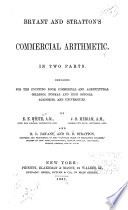 | Emerson Elbridge White - Arithmetic (Commercial), 1861 - 1861 - 348 pages
...DESCENDING. (2). The first term, number of terms, and last term being given to find the common difference. RULE. — Divide the difference of the extremes by the number of terms, less one. (3). The first term, common difference, and last term being given to find the number of terms. RULE.... | |
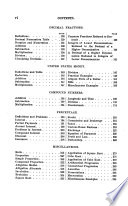 | James Stewart Eaton - 1862 - 320 pages
...difference, divided by 3 (15 -s- 3 = 5), gives one of these additions, ie the common difference. Hence, RULE. Divide the difference of the extremes by the number of terms less one, and the quotient will be the common difference. Ex. 1. The extremes of an arithmetical series are 3... | |
 | James Stewart Eaton - Arithmetic - 1864 - 322 pages
...difference, divided by 3 (16 -=-3 = 5), gives one of these additions, ie the common difference. Hence, RULE. Divide the difference of the extremes by the number of terms less one, and the quotient will be the common difference. Ex. 1. The extremes of an arithmetical series are 3... | |
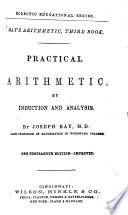 | Joseph Ray - Arithmetic - 1857 - 358 pages
...the number of terms less one, the quotient will be the com. diff. Hence, the Rule for Case II. — Divide the difference of the extremes by the number of terms less one; the quotient will be the com. diff. 2. The extremes are 3 and 300; the number of terms 10 : find the com. diif. Ans. 33. 3.... | |
 | John Fair Stoddard - Arithmetic - 1868 - 428 pages
...terms, to find the common difference. ANALYSIS.— Since a + (n— l)c=lc=1—a. Hence, the n— 1 Rule. — Divide the difference of the extremes by the number of terms less one. 1. The first term is 8, the last term 203, and the number of terms 40 ; what is the common difference... | |
 | John Fair Stoddard - Arithmetic - 1888 - 480 pages
...term*, to find U-- common difference. ANALYSIS. — Since a + (n — l)c=l. c= ~a. Hence, the n— 1 Rule. — Divide the difference of the extremes by the number of terms less one. 1. The first term is 8, the last term 203, and the nnmber of terms 40 ; what is the common difference... | |
| |